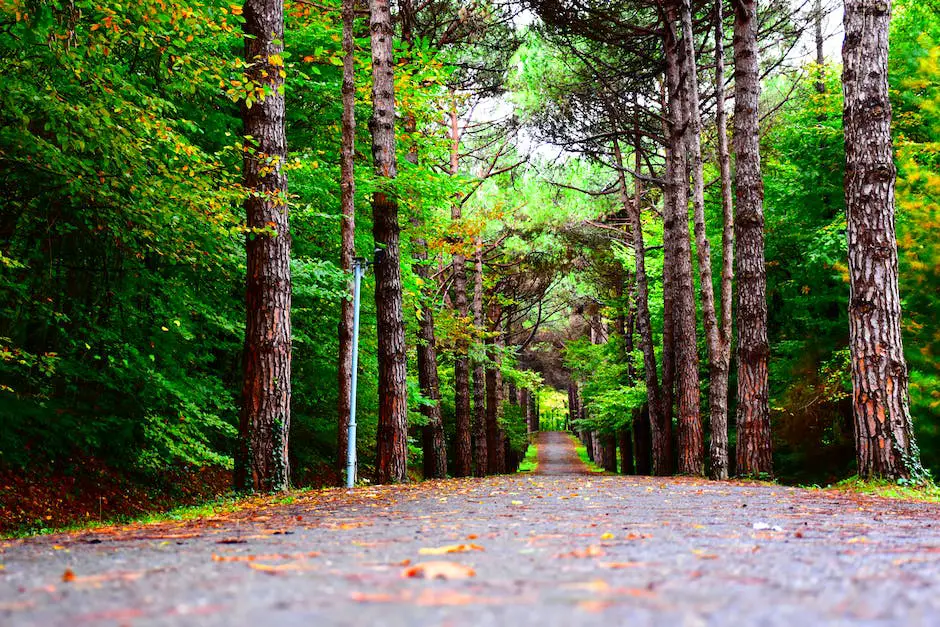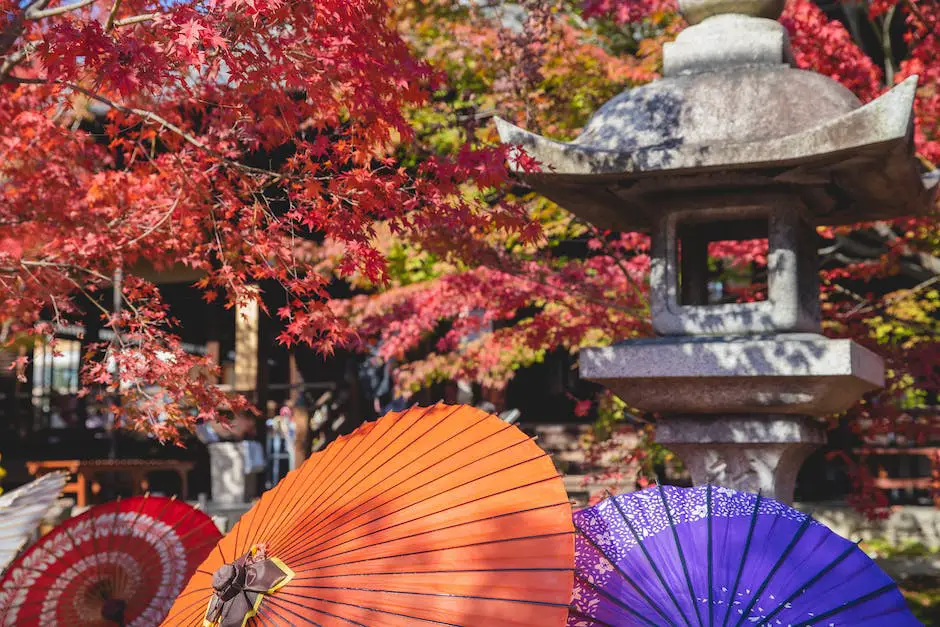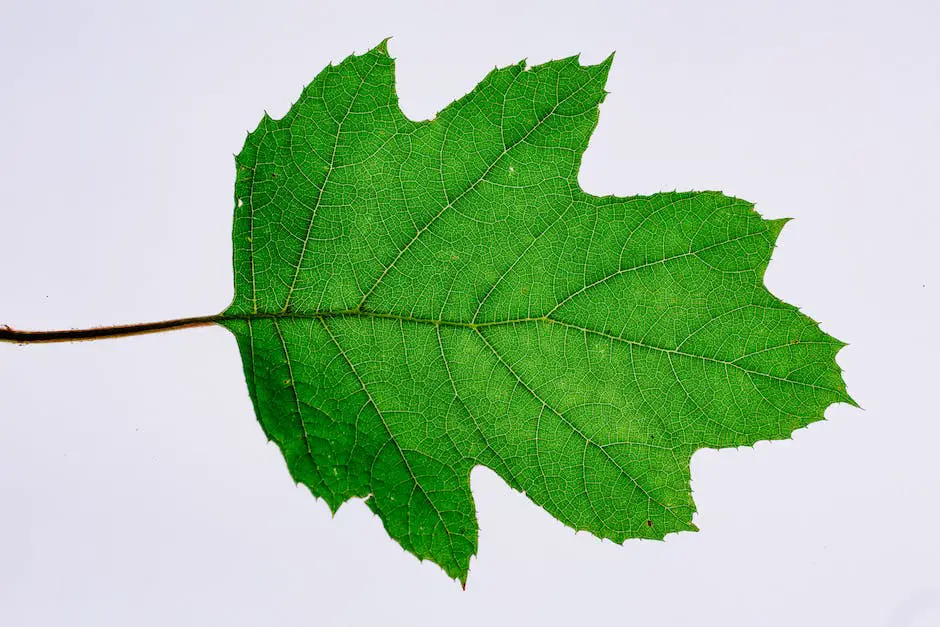In recent years, the practice of tapping maple trees for their sap has become increasingly popular. Some people believe that this practice can damage the tree, but is this really the case?
Tapping a maple tree does not damage it.
Is it worth tapping a maple tree?
Tapping a maple tree is easy and doesn’t harm the tree if done properly. Many have been tapped for over 100 years. That big, beautiful yard maple is actually better than the woods maple for producing maple syrup. An open grown tree is capable of producing one half gallon of syrup in a season vs.
As soon as you see buds starting to open, regardless of the weather forecast, it’s time to stop collecting sap. This is because the sap will become bitter and will ruin any pancakes or other dishes you make with it. You can tell the sap is getting bitter by closely examining it as you collect it.
Does tapping a tree for sap damage it
Tapping a maple tree to collect its sap does not cause serious damage if done correctly. The tree is resilient and can recover from a small hole. Tapping is essential to maple syrup production and, when done properly, does not harm the tree.
It is amazing how long it takes for a maple tree to grow before it is big enough to tap. On a good growing site, and if treated well, a maple tree can be tapped indefinitely. This is a great way to get a renewable resource that can be used for many things.
Do maple trees explode if not tapped?
Sap pressure build-up can occur in maple trees when the conditions are right – or wrong, as the case may be. The pressure can cause branches to explode, as was the case with some older trees.
Trees between 10 and 20 inches in diameter should have no more than one tap per tree. A second tap may be added to trees between 20 and 25 inches in diameter. Trees over 25 inches in diameter can sustain three taps. No tree should ever have more than three taps.
Can all maple trees be tapped for maple syrup?
Maple syrup is made by boiling sap from maple trees. Any species of maple tree can be used, but the sugar content of the sap varies from tree to tree. The trees with the highest sugar content are sugar maples, followed by black, red and silver maples. Box elder trees also have a good sugar content, but they are not as commonly used for making syrup.
The south side of the tree is the best place to tap a tree for sap. The tap hole should be above a large root or below a large branch. If more than one tap is to be placed in the same tree, distribute the tap holes around the circumference of the tree. Be sure to avoid any damaged area of the tree.
How often can you tap a maple tree for sap
The maple tree is a popular tree to tap for syrup. If the tree has a diameter of 12 to 20 inches, it can be tapped only once. If the tree’s diameter is between 21 and 27 inches, it can be tapped twice. If the tree’s diameter surpasses 27 inches, it can be tapped three times.
Since it is certainly possible for harmful bacteria to be found in sap, the cautious solution is to pasteurize it before drinking. Some people enjoy drinking sap fresh from the tree, while others prefer to boiling it for a brief period to kill any bacteria or yeast. However, boiling for a brief period may not necessarily kill all bacteria or yeast and so pasteurization is the best way to ensure that the sap is safe to drink.
Can you tap a tree multiple times?
This is to ensure that the tree will not be harmed and to also ensure a good tapsite. If the tree is not healthy, tapping it could do more harm than good.
There are a few things to keep in mind when tapping a tree:
-Pick a healthy tree that is at least 10 inches in diameter.
-The best trees for tapping are Sugar Maples, although you can also tap Birch, Cherry, Walnut, and Ash trees.
-Avoid tapping a tree that has been recently wounded or damaged.
-Try to tap the tree on the side that gets the most sunlight.
If you follow these guidelines, you should be able to tap the same trees every year.
What happens if you tap a maple tree too early
When you tap a tree in the spring, it is the equivalent to a human getting a small cut. The tree will react to this by try to heal the wound by scarring over. However, if you tap too early in the season, the tree won’t have fully healed from the previous tap and will not be able to scar over as effectively, leading to a reduced flow of sap.
You should angle the drilled bit upwards to ensure that the sap will run out. The tap holes should not exceed two inches in depth in order to avoid cutting across the growth of the tree.
Does tapping maple tree slow the growth?
Tapping can reduce the growth of sugar maple trees, according to some studies. This may be due to the stress that tapping puts on the tree, as well as the loss of nutrients and water that tapped trees experience. If you’re considering tapping a sugar maple tree, be sure to do your research and weigh the pros and cons before proceeding.
The sap of the sugar maple tree can be used to make maple syrup. In order to tap the tree, a hole must be drilled into the trunk of the tree on the south side, either above a large root or below a large branch. The tap can be anywhere from 2 to 4 feet off the ground.
Can a maple tree survive without bark
If you notice that the bark on your tree is peeling all the way around, it’s not a good sign. This type of damage is known as girdling, and it can kill a tree if it goes even half way around. If you see this happening, it’s best to consult with a tree expert to see if there is anything that can be done to save the tree.
If you have a sugar maple that is at least 10 inches in diameter, it’s big enough to tap. You can tap other species of trees as well, like birch and black walnut. The amount of sugar in their sap is much lower, but it is still tasty!
How much is maple sap worth
If you have a load of sap that contains 2% sugar, it will take 43 gallons of sap to make a gallon of syrup. At that sugar concentration, the value of each gallon of sap is 35 cents per gallon.
A tapped maple tree will typically produce 10 to 20 gallons of sap per tap. And as long as the tree remains healthy, it should continue to produce sap for years, if not decades. In fact, some trees have been producing sap for more than 100 years!
How do you tell if a maple tree can be tapped
The favorite way for me to identify Is I look up at the top and the branch is up there you’ll see the leaves and the branches and the trunk all in one place. If you look at just the leaves you’ll see that they’re mostly all the same size and shape and they’re all attached to the stem in the same way. The flowers are also a good way to tell them apart.
So, just like humans need to be a certain age to give blood, maple trees need to be mature before you can remove sap without harming the tree. You need to measure around the tree at about shoulder height (15 m) to determine if it’s big enough. The tree must be 254+ cm in diameter for you to put one tap in it, 45 cm for two taps, and 60 cm for three taps.
How deep do you drill a maple tap
The trade-offs for tap hole depth are mostly related to the potential for tap hole injury and the efficiency of sap production. A shallower tap hole is easier to drill, but it doesn’t allow the Tap to withdraw as much sap. A deeper tap hole requires more effort to drill, but it provides a larger reservoir for sap production.
If you’re making maple syrup, it’s important to get the boiling time just right. If you boil it for too long, the syrup will crystallize. If you don’t boil it long enough, the syrup will spoil quickly and be watery because the concentration of sugar will be too low.
How long will maple sap last before boiling
To ensure the freshness of your sap, it should be stored at a temperature of 38 degrees F or colder. You have 7 days to use it after collection. To kill any bacteria, boil the sap before using. If there is snow on the ground, you may keep the storage containers outside, in the shade, and packed with snow.
The “boiling down” process is an important step in making syrup, and it’s important to get it right. Evaporation that is too slow or too fast will affect the color, flavor and texture of the syrup. So be patient, and enjoy the process!
What are the benefits of maple sap
A new study found that maple sap contains Abscisic Acid (ABA). ABA is a plant hormone that plays a role in stress response, and it’s also been shown to have anti-inflammatory and antioxidant effects. This means that maple sap could potentially be used as a natural remedy for digestive issues. Maple sap is also a good source of oligosaccharides, which are prebiotics that help feed the good bacteria in our gut. This makes maple sap a dual-purpose remedy for digestive problems: it can help both the good bacteria and the bad bacteria in our gut.
The sap of the sugar maple tree is only ever-so slightly sweet, with a 40:1 sugar ratio. This means that it doesn’t have enough sugar to ferment into much alcohol as is. However, by boiling it down, we can concentrate the sugars into a beverage that has a sufficient amount of alcohol for fermentation.
Final Words
It is not recommended to tap a maple tree because it can damage the tree. Tapping creates a wound in the tree that can be a entry point for pests and diseases. It also can stress the tree and reduce its vigor and lifespan.
The jury is still out on whether or not tapping a maple tree damages it. Some studies say that tapping a maple tree can help it to grow, while other studies say that it damages the tree. It is hard to know for sure what the effect of tapping a maple tree is, but it is generally accepted that it is not good for the tree.
I’ve always been drawn to trees.
As a kid, I spent most of my free time outside, climbing, exploring, and trying to figure out the names of the trees around me.
That early curiosity eventually led me to study arboriculture and horticulture at Michigan State.
Later, I completed a degree in forestry at the University of Michigan.
I’ve been working in tree care and education ever since.
These days, I enjoy helping people learn more about the trees in their own backyards.
How they grow, how to care for them, and why they matter.
You don’t need to be an expert to appreciate trees.
A little curiosity goes a long way.
